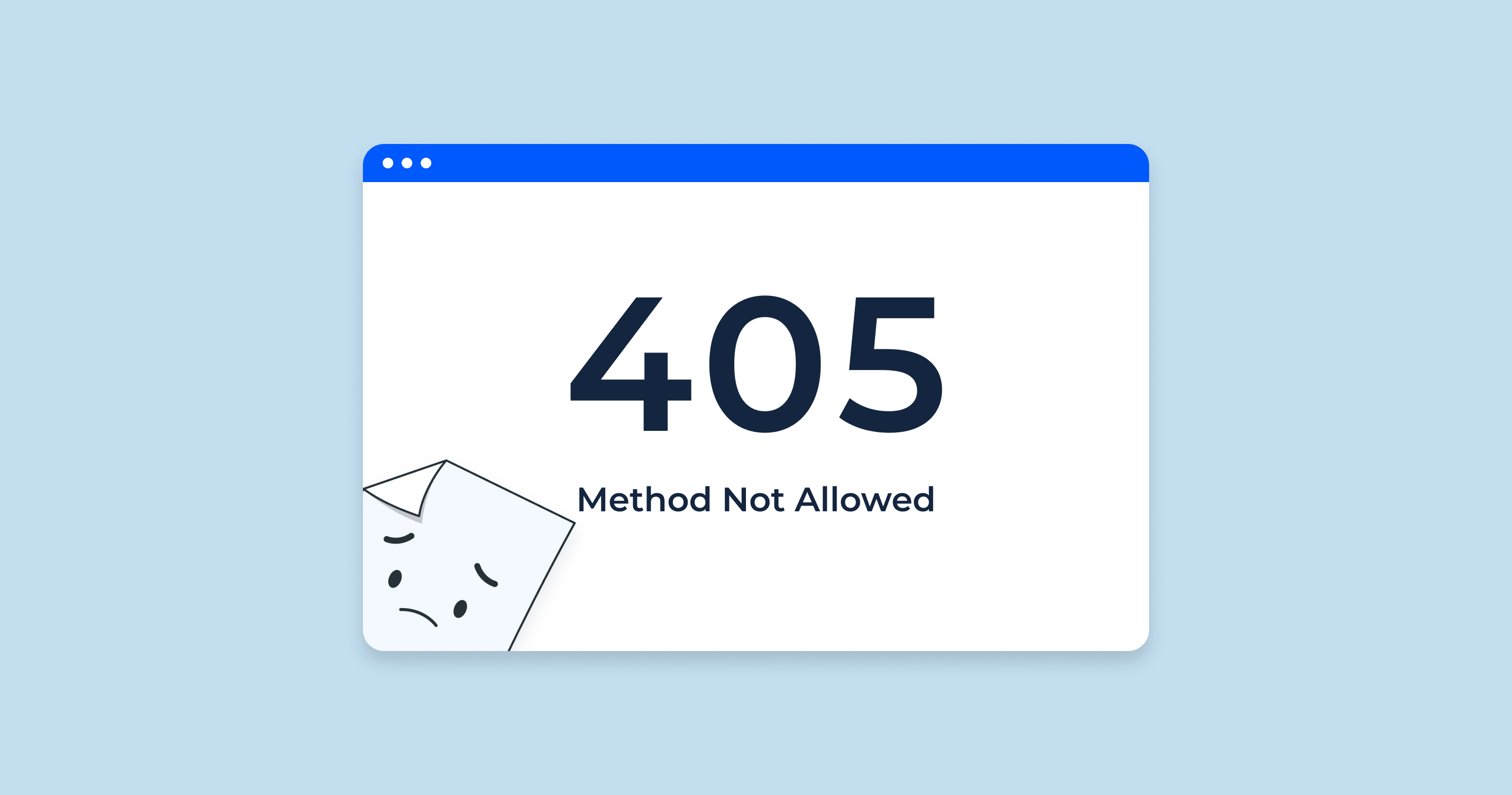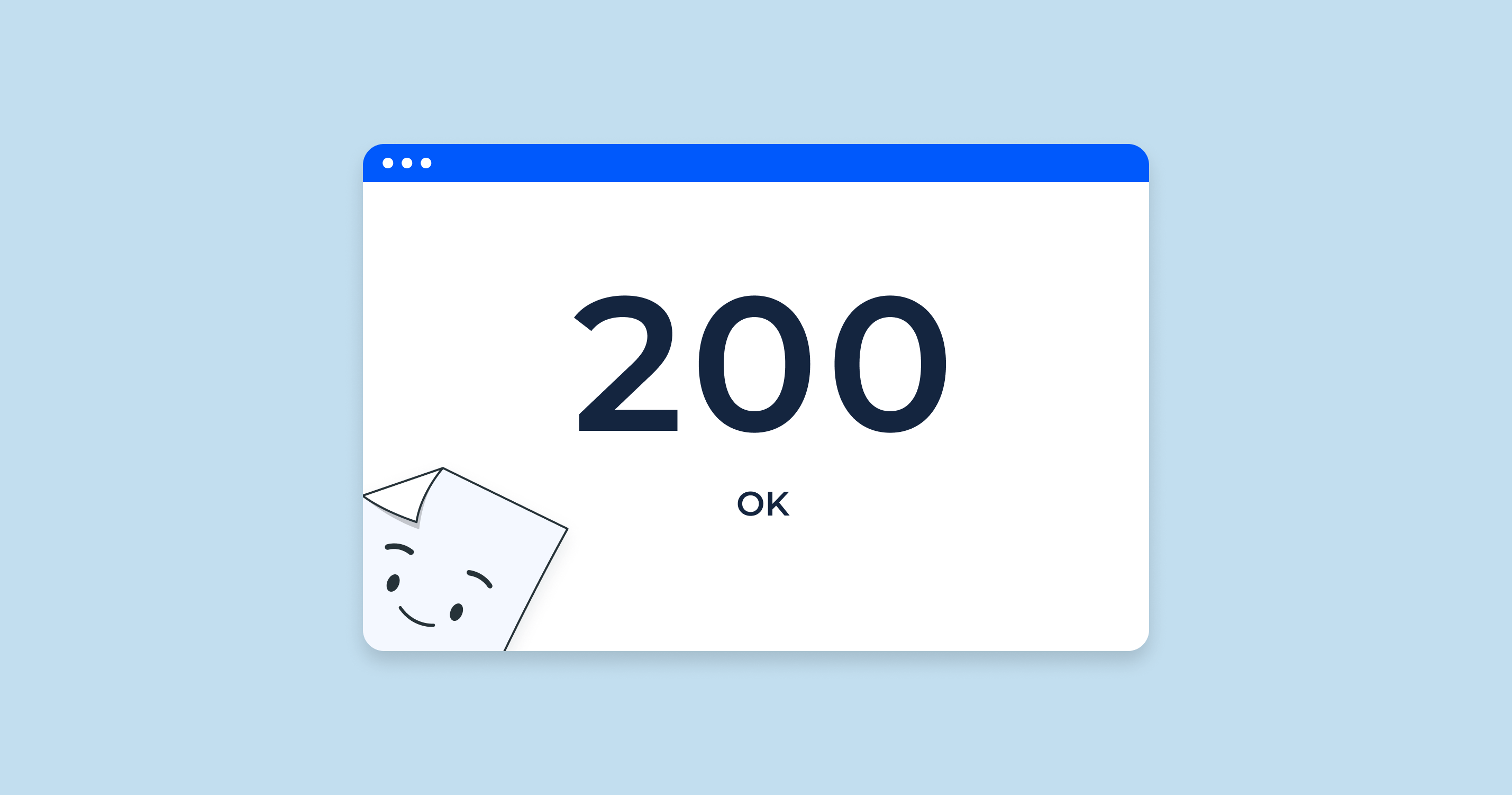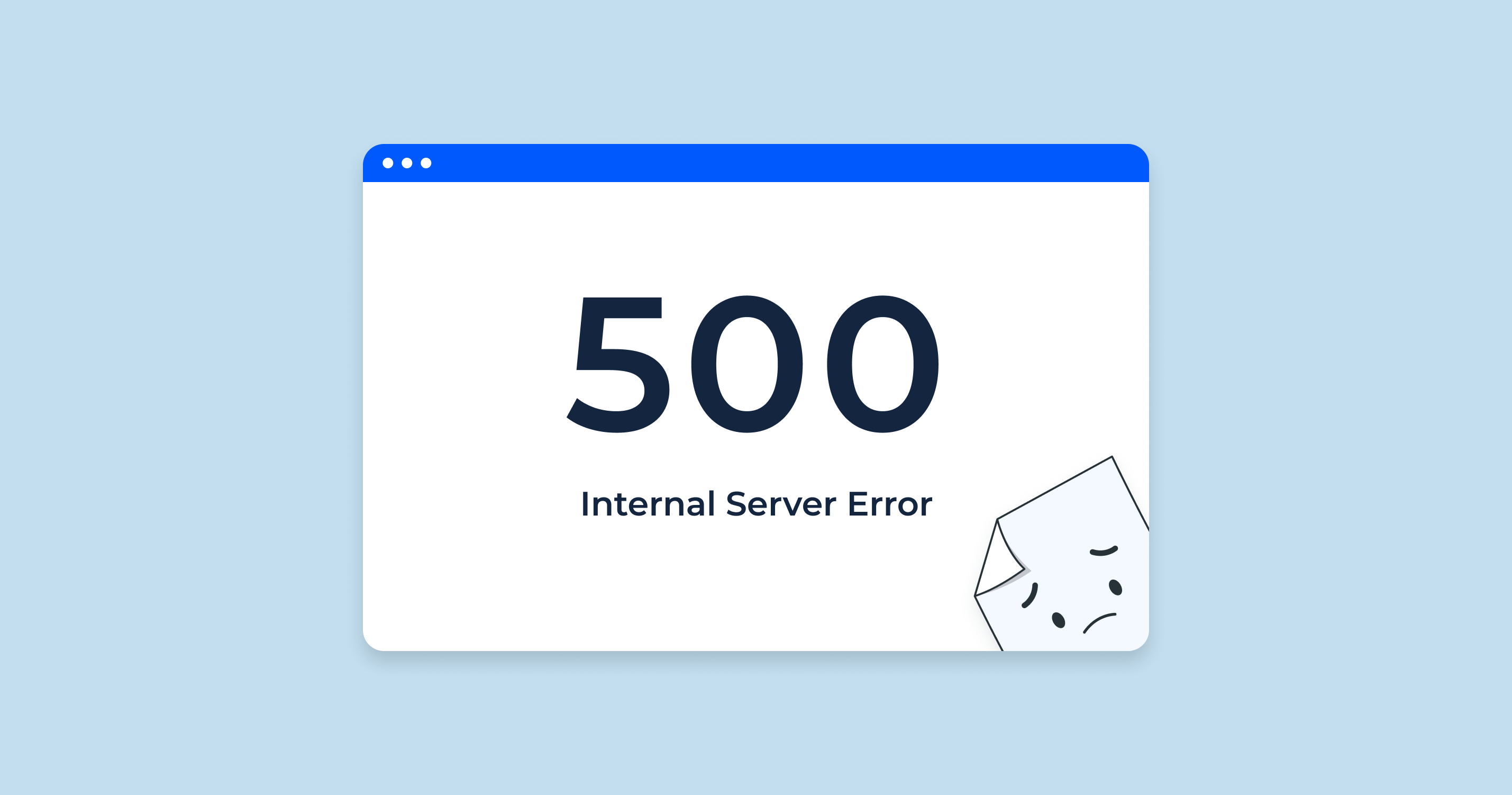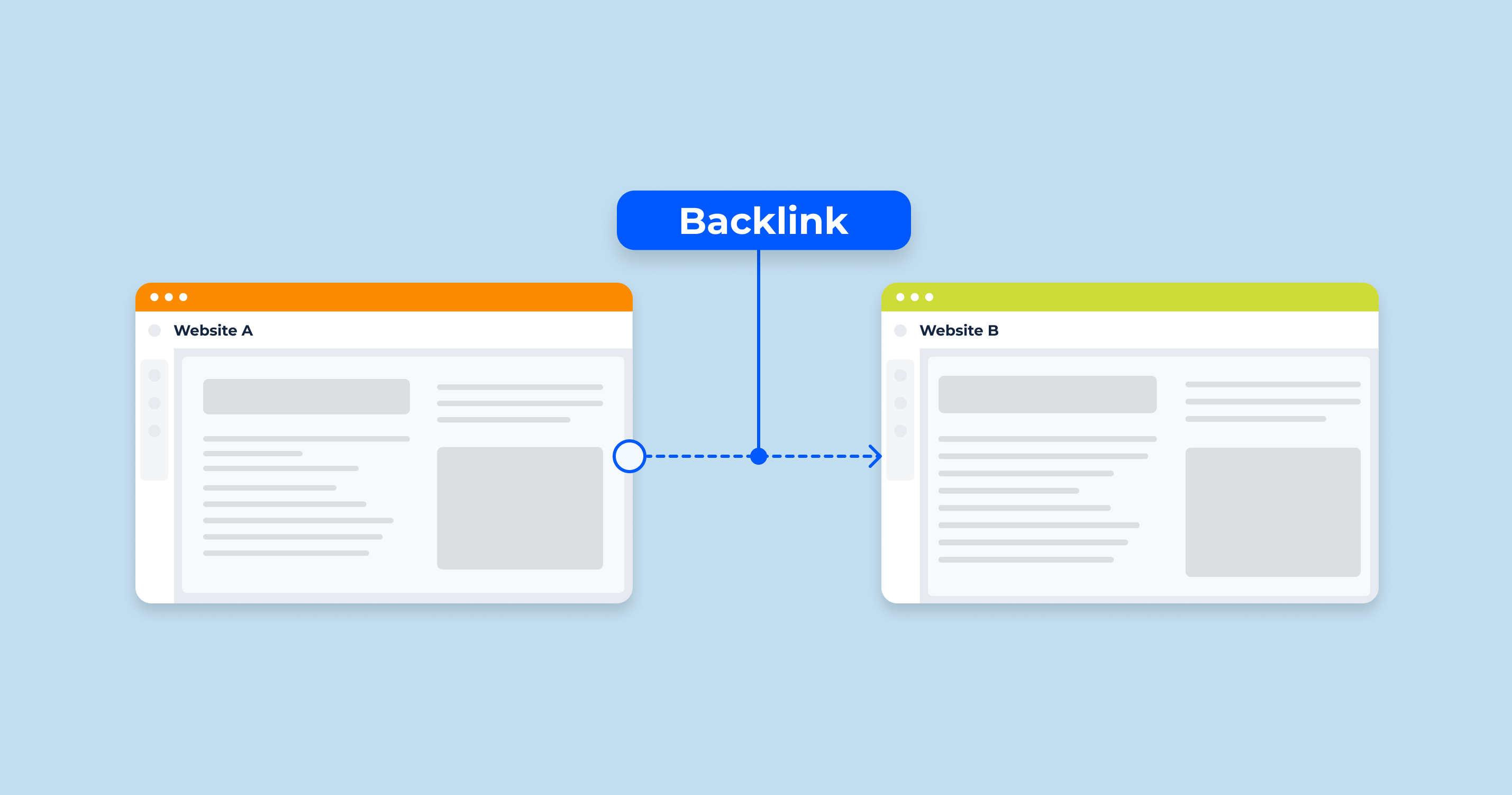A 405 Status Code in HTTP protocol represents “Method Not Allowed”. This is a response status code that a server sends back when the client (such as a web browser) has requested a method that is not supported for the requested resource.
To elaborate:
- When a client communicates with a server to request a resource (like a web page), it uses certain methods. The most commonly used methods are GET (used to retrieve data), POST (used to send data), PUT (used to update data), and DELETE (used to remove data).
- If a client sends a request using a method that the server does not support for that particular resource, the server responds with a 405 status code.
For instance, a server may be configured to only accept GET requests for a certain web page. If a client sends a POST request to this web page, the server will respond with a 405 “Method Not Allowed” status code. This informs the client that it has used an inappropriate method for the request.
The 405 status code is part of the 4xx class of HTTP status codes. These are client error responses, indicating that there was a problem with the request sent by the client. These errors are not the result of a problem on the server side, but rather an issue with the request sent by the client.
Understanding and properly handling 405 errors is important in web development and SEO, as recurring errors of this type could negatively impact user experience and the site’s relationship with search engines.
Here are the most common reasons that cause a 405 Status Code:
- Improper HTTP Method Used. This is the most typical reason for a 405 error. If a client sends a request to a server using an HTTP method (like POST, GET, PUT, DELETE) that the server does not support for the specified resource, the server will respond with a 405 status code. For example, if a client tries to DELETE a resource that is only configured to handle GET and POST requests, the server will return a 405 error.
- Server Configuration Issues. Sometimes, a 405 error may be caused by the server’s configuration. The server could be incorrectly configured not to allow certain methods for specific resources. This is particularly common on servers that have strict security rules or are configured manually.
- Application or Framework Limitations. Certain web application frameworks or software limit the types of HTTP methods that can be used. If a client tries to use a method that the application does not support, a 405 error could be returned.
- Web Server Software. Some web server software might not support certain HTTP methods at all, leading to 405 errors.
For example, older or less advanced servers might not properly support methods like PUT or DELETE.
- Client-side Programming Errors. In some cases, a 405 error could be the result of a client-side programming error, where the wrong HTTP method is being used in the request due to a bug or oversight in the code.
Identifying the cause of a 405 error typically involves reviewing the application’s code, the server’s configuration, and potentially the client-side code as well. It’s important to address these errors, as they can lead to a negative user experience and impact SEO.
405 Status Code Impact on SEO
Indeed, HTTP status codes, including the 405 status code, can have significant impacts on SEO, affecting how search engine crawlers interpret and interact with a website.
Here’s an outline of the potential effects:
| Crawl Efficiency | When search engine bots encounter a 405 status code, they interpret this as a “Method Not Allowed” error. This could potentially affect a website’s crawl budget, which is the number of pages a search engine will crawl on your site within a certain timeframe. If a site has numerous 405 errors, search engine bots could end up wasting time on these inaccessible pages instead of crawling other accessible pages on the site. This could lead to important pages not being crawled as frequently or at all. |
| Indexing | A 405 error on a page essentially makes it uncrawlable by search engine bots. If a page cannot be crawled, it cannot be indexed, which means it won’t appear in search engine results. If a key resource on your website returns a 405 error when search engines try to access it, it could negatively impact the visibility of your website. |
| User Experience | While a 405 status code primarily affects server-client interactions and isn’t typically shown to users, it could still indirectly impact user experience. For example, if a form submission on your site leads to a 405 error, users might not be able to complete their intended actions. Poor user experiences like this can increase bounce rates and reduce dwell time, which can negatively impact SEO. |
| Site Reputation | Regular occurrence of 405 errors might make search engines perceive your website as poorly maintained, which might influence the site’s overall reputation and ranking negatively. |
| Link Equity | If external or internal links point to a resource that returns a 405 error, link equity (the SEO value passed from one page to another through hyperlinks) cannot be passed on to that resource, which could negatively impact the SEO value of the linked resource. |
In conclusion, while a 405 status code might not directly result in ranking penalties, its indirect effects, such as impacts on crawl efficiency, indexing, and user experience, can affect SEO.
Therefore, it’s important to identify and fix these errors promptly to maintain optimal website performance and search engine visibility.
Troubleshooting and Solving 405 Errors
Let’s dive into how one can troubleshoot and solve 405 Status Code errors:
Identifying the Problem
Check the HTTP Method Used
405 errors are specifically related to the HTTP method used to request a resource. Double-check the method that’s causing the problem. If a GET request is returning a 405 error, for example, it could indicate that the resource is not configured to handle GET requests.
If the server is incorrectly configured, you might need to update the server's configuration to allow the method that's returning a 405 error. This process varies depending on the server software being used. For instance, in Apache, this could involve updating the .htaccess file, while in IIS, you might need to modify the web.config file.
Server Configuration Issues
Sometimes, a 405 error is caused by the server being improperly configured to handle a specific HTTP method for a resource.
If the server is incorrectly configured, you might need to update the server's configuration to allow the method that's returning a 405 error. This process varies depending on the server software being used. For instance, in Apache, this could involve updating the .htaccess file, while in IIS, you might need to modify the web.config file.
Web Application or Framework Limitations
In some cases, the web application or framework used to build the website might not support the HTTP method being used, leading to a 405 error.
If the application or framework does not support the method, you might need to modify the application settings or even switch to a different framework that does support the method.
Web Server Software
If the server software does not support the HTTP method being used, it could return a 405 error.
If your server software does not support the method, you might need to update the software to a version that does or switch to a different server software that supports the method.
To maintain optimal website performance, it’s important to regularly audit your site for 405 errors and other issues. Tools like Google Search Console or Website Crawler for Technical SEO Analyze by Sitechecker can help identify and debug these errors. Always remember to test your website thoroughly after making any changes to ensure that you’ve resolved the issue without unintentionally causing new ones.
HTTP Status Code Checker for Detecting 405 Status Codes
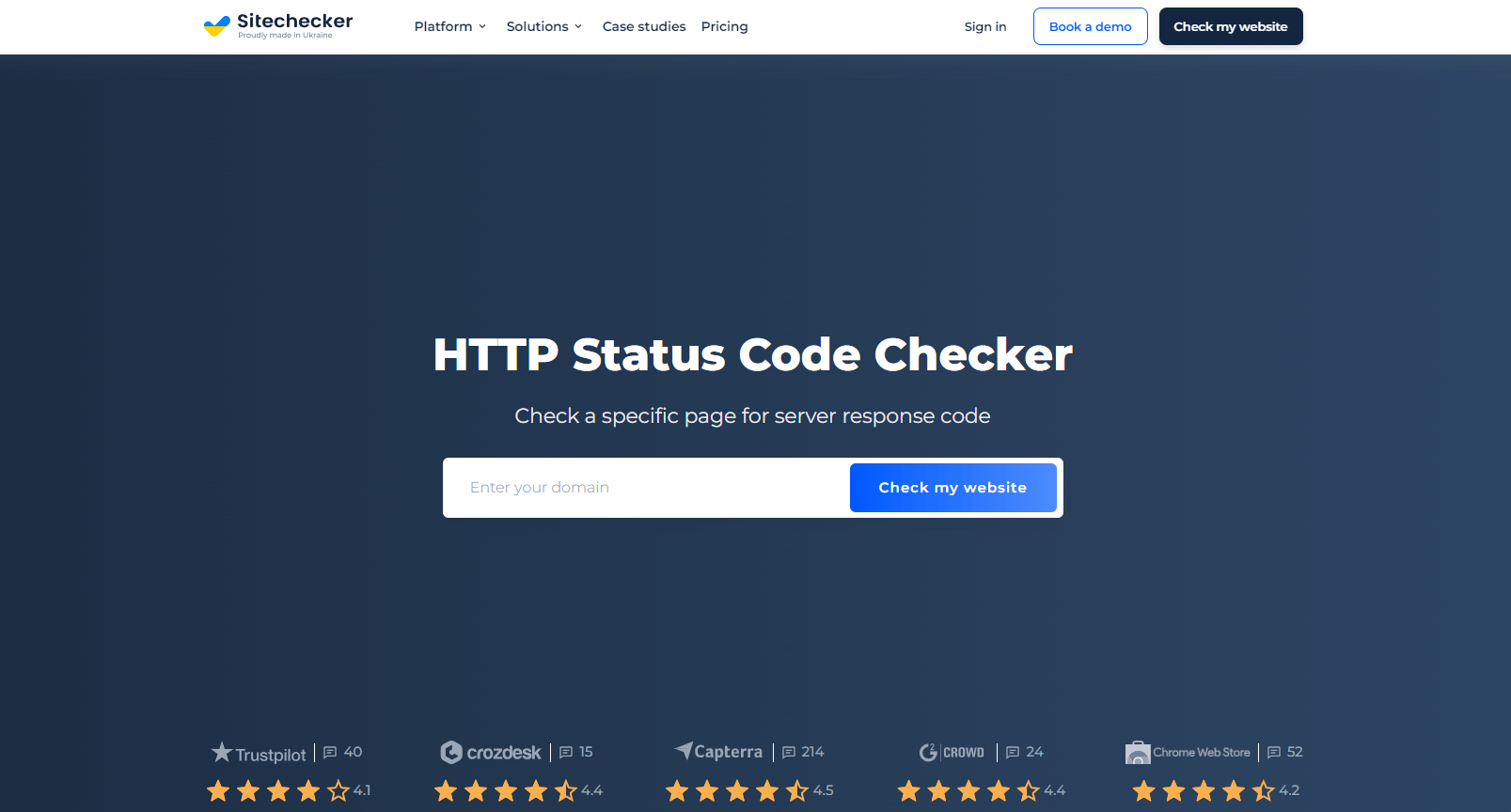
Sitechecker.pro is an invaluable tool for detecting HTTP status codes, such as the 405 status code.
Once you’ve initiated the audit, Sitechecker will meticulously crawl your website. The result is a comprehensive report that offers a wealth of information about your website, including its overall health, performance, and various SEO metrics. One key section of this report is dedicated to HTTP status codes.
In this HTTP status codes section, Sitechecker provides detailed information about all the different status codes encountered while crawling your site. To identify any potential issues, look specifically for instances of a 405 status code within the report.
The report will not only highlight the occurrence of any 405 errors, but also provide the precise location where these errors are happening. With this information at hand, you can begin troubleshooting and resolving the errors. This might necessitate tasks such as modifying server configurations, updating application methods, or correcting coding errors.
Conclusion
Understanding the significance of a 405 status code is essential for managing an efficient and user-friendly website. This HTTP protocol response denotes “Method Not Allowed,” occurring when the client requests a method unsupported by the server. It’s often due to issues like incorrect HTTP methods, server configurations, application limitations, or programming errors.
Importantly, a 405 status code can adversely affect your SEO. It can impact crawl efficiency, indexing, user experience, site reputation, and link equity. Therefore, promptly addressing these errors is crucial for maintaining optimal website performance and visibility.
Regular audits and quick troubleshooting are keys to a healthy, SEO-friendly website. Despite the complexity, the effort invested in managing these errors is critical for ensuring a smooth user experience and maximizing your website’s performance.
